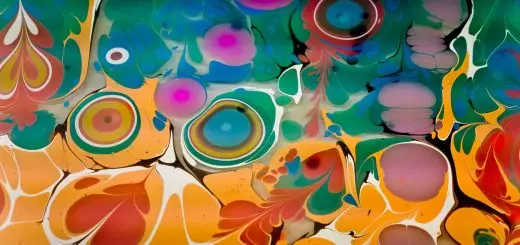The Importance of the Snake in Different Myths and Lore

Looking for more amazing products? Check out our online store and explore our collection here! Happy shopping!
Before diving in, please note: This post is for informational purposes only. If you’d like to know more about how we approach topics, feel free to check out our friendly Disclaimer Page.
Hey there, amazing readers! 
We’re committed to delivering quality posts, and your support (even just sticking around despite the ads) means everything to us. So, bear with us, and thanks for helping us keep the good vibes rolling. Now, on to the fun stuff!
TRANSLATE BUTTON AT THE END OF THE ARTICLE
Introduction: Exploring the Significance of Snakes in Mythology
Throughout history, snakes have played a prominent role in various myths and legends across different cultures around the world.
These slithering creatures have often been depicted as symbols of power, deception, rebirth, wisdom, and more, reflecting the diverse interpretations and beliefs surrounding them.
From Ancient Egypt to Chinese mythology, snakes have left their mark on the collective consciousness of humanity, shaping our understanding of the world and our place within it.
In this article, we will delve into the importance of snakes in different myths and lore, highlighting the rich tapestry of meanings they carry across cultures and time periods.
Ancient Egypt: The Serpent as a Symbol of Power and Protection
In Ancient Egypt, the serpent held a significant place in religious beliefs and iconography.
The goddess Wadjet, often depicted as a cobra or a snake, was a powerful deity associated with protection, royalty, and the sun.
The uraeus, a symbol of a rearing cobra, adorned the crowns of pharaohs, signifying their divine authority and connection to the gods.
Snakes were also linked to the underworld and the afterlife, with the Ouroboros, a serpent eating its tail, symbolizing eternity and the cyclical nature of life and death in Egyptian cosmology.
Biblical Stories: The Snake as a Deceiver and Bringer of Knowledge
In the Bible, the snake is famously portrayed as a cunning creature that deceives Eve in the Garden of Eden by tempting her to eat the forbidden fruit from the Tree of Knowledge.
This act leads to the expulsion of Adam and Eve from paradise, symbolizing the loss of innocence and the introduction of sin into the world.
The snake’s role as a trickster and a bringer of forbidden knowledge underscores its dual nature as a symbol of both temptation and wisdom, highlighting the complex moral lessons embedded in biblical narratives.
Greek Mythology: The Serpent as a Symbol of Rebirth and Transformation
In Greek mythology, the serpent is often associated with themes of rebirth, regeneration, and transformation.
The ouroboros, a motif of a snake eating its tail, represents the eternal cycle of life, death, and renewal.
The god Asclepius, associated with healing and medicine, is symbolized by a staff entwined with a serpent, known as the Rod of Asclepius, which has become a universal symbol of medicine and healthcare.
Snakes are also linked to the chthonic deities of the underworld, such as the serpent-haired Medusa, whose gaze could turn people to stone.
Native American Folklore: Snakes as Guardians of Sacred Knowledge
In Native American folklore, snakes are often revered as symbols of wisdom, protection, and guardianship of sacred knowledge.
The Mesoamerican deity Quetzalcoatl, depicted as a feathered serpent, was associated with creation, fertility, and learning.
Among the Hopi and Navajo tribes, the Rainbow Serpent was believed to bring rain, fertility, and spiritual guidance to the people.
Snakes were seen as mediators between the earthly realm and the spiritual realm, embodying the interconnectedness of all living beings and the natural world.
Hinduism: The Serpent as a Symbol of Cosmic Balance and Renewal
In Hindu mythology, snakes play a crucial role as symbols of cosmic balance, renewal, and transformation.
The serpent deity Shesha, also known as Ananta, supports the god Vishnu as he rests on the cosmic waters during the creation of the universe.
Nagas, serpent-like beings, are revered as protectors of underground treasures and guardians of sacred sites.
The kundalini, a coiled serpent energy at the base of the spine, represents spiritual potential and enlightenment, symbolizing the awakening of consciousness and the journey towards self-realization.
Chinese Mythology: The Snake as a Symbol of Wisdom and Fortune
In Chinese mythology, the snake is associated with wisdom, knowledge, and good fortune.
The Chinese zodiac includes the Snake as one of the twelve animal signs, representing intuition, introspection, and transformation.
The White Snake legend tells the story of a serpent spirit who transforms into a woman and falls in love with a human, highlighting themes of love, loyalty, and the blurring of boundaries between the natural and supernatural worlds.
Snakes are also linked to the concept of yin energy, representing femininity, receptivity, and the nurturing aspects of life.
Norse Mythology: The Serpent as a Symbol of Chaos and Destruction
In Norse mythology, snakes are often depicted as harbingers of chaos, destruction, and primal forces.
The Midgard Serpent, Jormungandr, encircles the world and is destined to bring about Ragnarok, the apocalyptic battle that ushers in the end of the world.
The serpent Nidhogg gnaws at the roots of Yggdrasil, the World Tree, symbolizing decay, entropy, and the cyclical nature of life and death.
Snakes are associated with the darker aspects of existence in Norse cosmology, embodying the untamed forces of nature and the inevitability of cosmic destruction.
African Mythology: Snakes as Symbols of Healing and Regeneration
In African mythology, snakes are often revered as symbols of healing, regeneration, and spiritual transformation.
The Rainbow Serpent, a common motif in African folklore, represents the life-giving powers of water, fertility, and renewal.
Snakes are believed to possess potent medicinal properties and are associated with healing rituals and shamanic practices.
Among the Yoruba people of Nigeria, the orisha Oshunmare is a rainbow serpent deity associated with rainbows, rivers, and fertility, symbolizing the interconnectedness of the natural world and the spiritual realm.
Australian Aboriginal Lore: Snakes as Symbols of Creation and Dreaming
In Australian Aboriginal lore, snakes play a central role in creation myths and the Dreaming, the spiritual and cultural foundation of indigenous belief systems.
The Rainbow Serpent, known by different names across Aboriginal nations, is a creator deity associated with the formation of land, waterways, and living beings.
Snakes are seen as custodians of sacred sites and repositories of ancestral knowledge, embodying the continuity of cultural traditions and the interconnectedness of past, present, and future.
The Dreaming stories often feature snakes as transformative beings that shape the landscape and guide the spiritual journey of the people.
South American Mythology: The Serpent as a Symbol of Fertility and Life
In South American mythology, snakes are revered as symbols of fertility, life, and regeneration.
The feathered serpent deity Quetzalcoatl, worshipped by the Aztecs and other Mesoamerican cultures, embodies the dual nature of creation and destruction, representing the cycle of life and death.
Snakes are associated with agricultural fertility rites, rainmaking ceremonies, and the renewal of the natural world.
Among the Inca and Maya civilizations, snakes were linked to the sun, water, and the underworld, symbolizing the interconnectedness of cosmic forces and the cyclical rhythms of nature.
Conclusion: The Enduring Importance of Snakes in Myths and Legends
In conclusion, the significance of snakes in myths and legends transcends cultural boundaries and time periods, reflecting the universal themes of power, wisdom, transformation, and renewal.
From Ancient Egypt to Chinese mythology, snakes have been portrayed in diverse and multifaceted ways, embodying the complexities of human experience and the mysteries of the natural world.
Whether as symbols of protection, deception, healing, or creation, snakes continue to captivate our imagination and illuminate the rich tapestry of beliefs and traditions that shape our understanding of the universe.
As we navigate the ever-changing landscape of myth and lore, the enduring presence of snakes serves as a reminder of the timeless truths and eternal mysteries that lie at the heart of the human experience.

The Enlightenment Journey is a remarkable collection of writings authored by a distinguished group of experts in the fields of spirituality, new age, and esoteric knowledge.
This anthology features a diverse assembly of well-experienced authors who bring their profound insights and credible perspectives to the forefront.
Each contributor possesses a wealth of knowledge and wisdom, making them authorities in their respective domains.
Together, they offer readers a transformative journey into the realms of spiritual growth, self-discovery, and esoteric enlightenment.
The Enlightenment Journey is a testament to the collective expertise of these luminaries, providing readers with a rich tapestry of ideas and information to illuminate their spiritual path.
Our Diverse Expertise
While our primary focus is on spirituality and esotericism, we are equally passionate about exploring a wide range of other topics and niches 

To ensure we provide the most accurate and valuable insights, we collaborate with trusted experts in their respective domains 
Our blog originally focused on spirituality and metaphysics, but we’ve since expanded to cover a wide range of niches. Don’t worry—we continue to publish a lot of articles on spirituality! Frequently visit our blog to explore our diverse content and stay tuned for more insightful reads.
Hey there, amazing reader! 
Check out our store here and take a peek at some of our featured products below! Thanks for being awesome!











